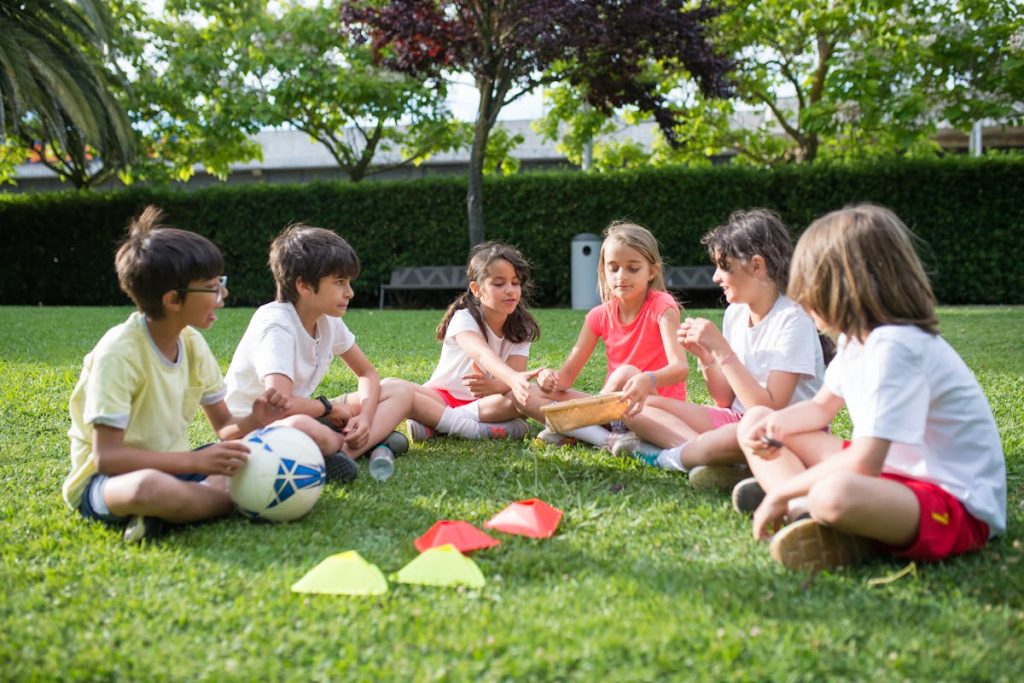In today’s technology-driven world, it’s easy to overlook the benefits of outdoor learning. Getting children outside not only promotes physical health but also enhances their cognitive, emotional, and social development. Here are five engaging outdoor learning activities that will inspire curiosity and foster a love for the natural world in children.
1. Nature Scavenger Hunt
What You’ll Need:
- A list of items to find (leaves, rocks, flowers, insects, etc.)
- A bag or basket to collect items
- Magnifying glass (optional)
A nature scavenger hunt is a fun and educational way to get children exploring their environment. Create a list of items commonly found in your area, such as different types of leaves, rocks, flowers, and insects. Give each child a list and a bag to collect their findings.
Tailor the list to the age group and the environment. For younger children, include pictures of items to find. For older children, add more challenging items or questions about each item’s role in the ecosystem.
2. Outdoor Art and Craft
What You’ll Need:
- Natural materials (leaves, twigs, stones, flowers)
- Basic art supplies (paper, glue, paints, markers)
Encourage children to create art using materials they find outside. They can make leaf rubbings, paint rocks, or create nature collages with twigs, flowers, and leaves.
Provide a variety of materials and tools, and let the children’s imagination guide their creations. Discuss the different textures, colours, and shapes of the natural materials they use.
3. Gardening and Planting
What You’ll Need:
- Seeds or young plants
- Gardening tools (trowels, gloves, watering cans)
- Designated garden area or pots
Gardening offers a hands-on way for children to learn about plant life cycles, soil, and ecosystems. Let them plant seeds or young plants and take responsibility for watering and caring for them.
Choose easy-to-grow plants such as sunflowers, tomatoes, or beans. Create a garden journal where children can document the growth and changes in their plants.
4. Outdoor Science Experiments
What You’ll Need:
- Materials for chosen experiments (baking soda, vinegar, water, etc.)
- Basic science tools (measuring cups, spoons, containers)
Conduct simple science experiments outdoors to spark curiosity and teach scientific concepts. Examples include making a baking soda and vinegar volcano, observing how different materials interact with water, or creating a simple weather station.
Choose experiments that are age-appropriate and ensure safety measures are in place. Encourage children to make predictions and discuss the outcomes of each experiment.
5. Outdoor Storytelling and Reading
What You’ll Need:
- Books or storytelling prompts
- Comfortable seating (blankets, cushions, or outdoor chairs)
Take storytime outside. Choose books related to nature or adventure and read them in a natural setting. Alternatively, create storytelling sessions where children make up their own stories inspired by their surroundings.
Choose a quiet and comfortable outdoor spot. Engage children by asking questions about the story and encouraging them to share their own nature-inspired tales.
Outdoor learning activities offer a wealth of benefits, according to this independent school in Herts. From fostering curiosity and creativity to promoting physical health and environmental stewardship. By incorporating these five activities into your child’s routine, you can help them develop a deeper connection with nature and a lifelong love for learning. So, get outside, explore, and let the natural world be your classroom
You may also like
-
Proactive Sourcing Through Embedded Talent: Building Talent Pipelines that Work
-
What accessibility features help disabled patients use a prescription online?
-
How To Choose From The Top Universities In The UK: A 2025 Guide For Global Students
-
Craft Your Resume Using Word Resume Templates: Make Your First Impression Count
-
Deep Dive into Secure Multi-Tenant Architectures for SaaS Platforms
 Proactive Sourcing Through Embedded Talent: Building Talent Pipelines that Work
Proactive Sourcing Through Embedded Talent: Building Talent Pipelines that Work  What accessibility features help disabled patients use a prescription online?
What accessibility features help disabled patients use a prescription online?  How To Choose From The Top Universities In The UK: A 2025 Guide For Global Students
How To Choose From The Top Universities In The UK: A 2025 Guide For Global Students 

